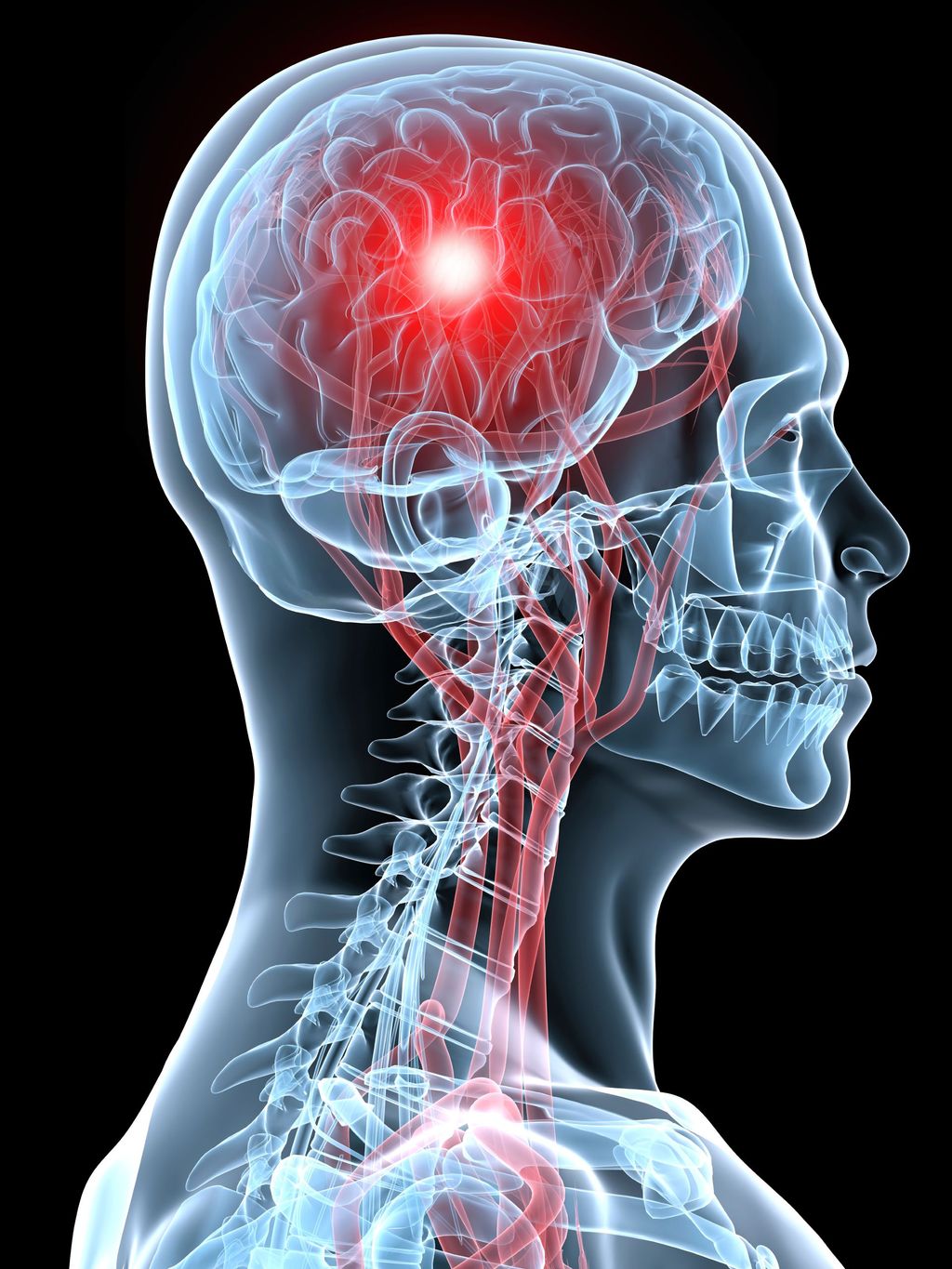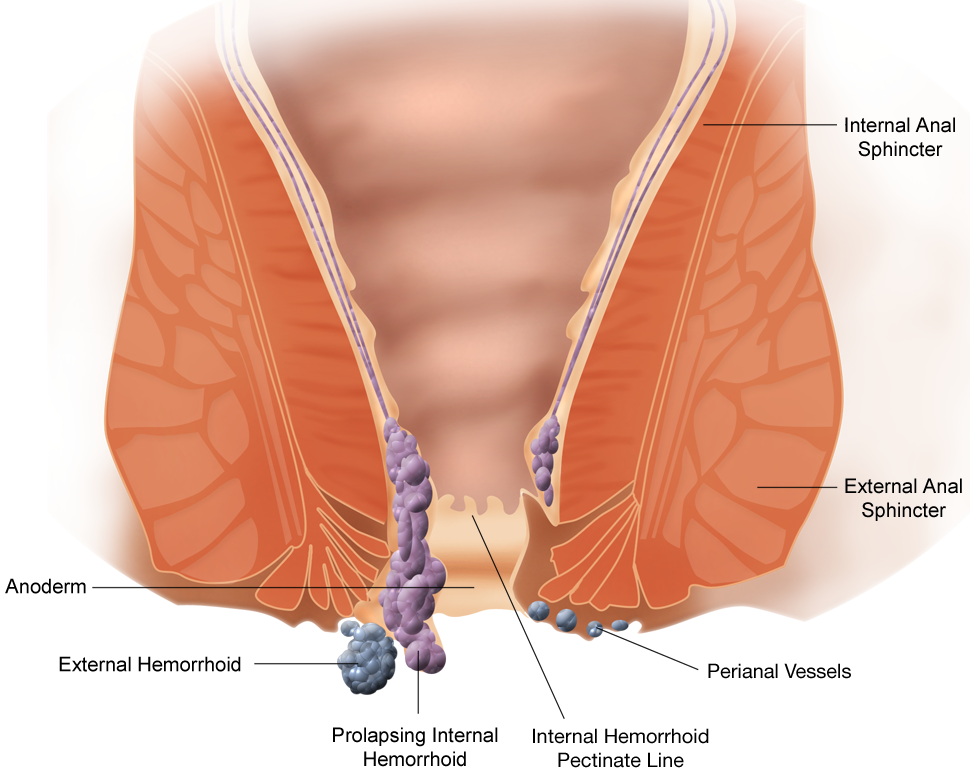
Sleep duration, defined as the total amount of time spent sleeping within a 24-hour period, is a critical component of overall health and well-being. Experts generally recommend a healthy range of approximately 7–8 hours per night for adults. Deviations from this optimal range, particularly insufficient sleep (less than 6 hours) and excessive sleep (more than 9 hours), have garnered increasing attention from the medical community as potential risk factors for a variety of serious health conditions.
In recent years, a growing body of investigation has begun to reveal the complex relationships between sleep duration, its quality, and cardiovascular health, with a particular focus on the incidence and prognosis of stroke. Stroke, a devastating condition characterized by the interruption of blood supply to the brain, can lead to lasting neurological damage, severe disability, or even death. Given the global prevalence and severity of stroke as a major health issue, understanding its links to daily habits like sleep is of paramount importance.
The role of sleep in this context is far from simple, encompassing direct physiological impacts on the brain’s vascular system and indirect effects mediated through other systemic health conditions. Our review aims to provide a comprehensive overview of the existing evidence, highlighting how both too little and too much sleep are implicated in increasing stroke risk, a phenomenon often described as a ‘U-shaped’ relationship.

1. **The Healthy Sleep Benchmark: Understanding Optimal Sleep Duration**Understanding what constitutes healthy sleep is the first step in recognizing potential risks. Sleep duration is precisely defined as the total amount of time an individual spends sleeping over a 24-hour period. For most adults, the generally recommended healthy range for maintaining optimal health is approximately 7–8 hours per night. This benchmark serves as a crucial reference point for assessing whether an individual’s sleep patterns are aligned with health-promoting behaviors.
When sleep duration deviates significantly from this recommended range, either falling below 6 hours (insufficient sleep) or exceeding 9 hours (excessive sleep), these patterns are increasingly recognized as potential risk factors for various adverse health conditions. Clinically, variations in sleep duration are closely linked with several common disorders. These include insomnia, characterized by difficulty falling or staying asleep; hypersomnia, marked by excessive daytime sleepiness or prolonged nighttime sleep; psychiatric conditions that often disrupt sleep; and obstructive sleep apnea (OSA) syndrome, a condition where breathing repeatedly stops and starts during sleep. Each of these conditions contributes uniquely to an individual’s sleep patterns and overall sleep quality.
It is vital to acknowledge that individual needs for sleep can vary. Therefore, the assessment of sleep quantity should not be based solely on a universal rigid number. Instead, a more personalized approach is recommended, one that considers the deviation from an individual’s optimal sleep duration. As the context states, “Due to individual differences, the assessment of sleep quantity should be based on the deviation from an individual’s optimal sleep duration.” This individualized perspective helps healthcare professionals provide more tailored advice and interventions, ensuring that sleep recommendations are both effective and appropriate for each patient.
2. **The U-Shaped Curve: How Both Too Little and Too Much Sleep Drive Stroke Risk**The relationship between sleep duration and cardiovascular outcomes, including the critical area of stroke risk, has been consistently described as a ‘U-shaped’ curve. This particular pattern indicates that the lowest risk for these health issues lies within a moderate, healthy sleep duration, typically the 7–8 hour range. Conversely, the risk significantly escalates at both extremes: when sleep is excessively short or excessively long. This finding is not merely theoretical; it is consistently supported by robust research.
A meta-analysis and a prospective study have explicitly identified this U-shaped relationship between sleep duration and cardiovascular diseases, with stroke being highlighted as the most prevalent cerebrovascular disease observed within this dangerous pattern. This means that neither skimping on sleep nor overindulging offers protection; instead, both carry heightened dangers for brain health. More recent studies have further reinforced this understanding, demonstrating conclusively that both excessive and insufficient sleep are directly associated with an increased risk of cerebrovascular diseases in patients.
This U-shaped relationship underscores a delicate balance required for neurovascular integrity. It challenges the intuitive assumption that if some sleep is good, more sleep must be better. Instead, it reveals that the body thrives within a specific range, and deviating from this range in either direction can push the cardiovascular system towards increased vulnerability. This consistent finding across multiple studies serves as a critical warning for individuals to monitor and manage their sleep habits to mitigate their stroke risk.

3. **The Perils of Short Sleep: Increased Risk for Specific Stroke Subtypes**Insufficient sleep, defined as consistently getting less than 6 hours of sleep per night, is not merely about feeling tired; it carries tangible and serious health consequences, particularly when it comes to stroke risk. A growing body of research unequivocally links inadequate sleep duration to an elevated likelihood of experiencing a cerebrovascular event. This connection is not generalized but has been observed with specificity, pointing to distinct patterns of risk.
Findings from various cohort studies have shed light on the nuances of this association. These studies demonstrate that inadequate sleep does not just increase the overall risk of stroke, but it specifically elevates the risk of hemorrhagic stroke. Hemorrhagic stroke occurs when a blood vessel in the brain ruptures and bleeds, which is a particularly dangerous type of stroke. This specific association highlights that different deviations in sleep duration might predispose individuals to different physiological vulnerabilities within the cerebrovascular system.
The implication of this finding is profound for public health. It suggests that chronic sleep deprivation may uniquely impact the integrity of blood vessels, making them more prone to rupture. Recognizing that shorter sleep heightens the risk for hemorrhagic stroke provides valuable insight into the intricate pathways through which sleep patterns influence brain health. This knowledge can guide targeted preventative strategies, emphasizing the importance of achieving adequate sleep to protect against this specific and often devastating form of stroke.

4. **The Risks of Long Sleep: When More Hours Don’t Mean More Health**While the dangers of insufficient sleep are frequently discussed, accumulating evidence also points to the risks associated with excessive sleep, generally defined as sleeping more than 9 hours within a 24-hour period. Far from being a protective factor, prolonged sleep duration has been consistently linked to an increased risk of stroke, completing the other half of the ‘U-shaped’ curve of risk. This indicates that there is a sweet spot for sleep, and going beyond it can be just as detrimental as falling short.
Cohort studies have provided substantial evidence for this association, indicating that longer sleep duration significantly heightens the risk of overall stroke. More specifically, these studies have also identified a particular link between prolonged sleep and an increased risk of ischemic stroke. Ischemic strokes, which account for the majority of stroke cases, occur when a blood clot blocks blood flow to the brain. This suggests that excessive sleep might contribute to conditions that lead to clot formation or blockages in cerebral blood vessels.
Interestingly, the findings on specific stroke subtypes can vary between different types of studies, illustrating the complexity of sleep research. While cohort studies pointed to longer sleep increasing the risk of overall and ischemic stroke, a meta-analysis offered a slightly different perspective regarding hemorrhagic stroke. The meta-analysis found that “prolonged sleep duration increases the risk of hemorrhagic stroke, whereas insufficient sleep does not increase the risk of hemorrhagic stroke.” This divergence highlights the ongoing need for nuanced interpretation of research findings and the consideration of diverse methodologies.
This dual risk—from both too little and too much sleep—underscores the importance of understanding and maintaining a balanced sleep schedule. It reinforces the message that simply maximizing sleep hours is not the answer; rather, it’s about optimizing sleep duration within the recommended healthy range to minimize cardiovascular and cerebrovascular risks.
Read more about: Beyond the Grind: 15 Proven Tricks Long-Haul Truckers Use to Master Alertness and Focus on the Road
5. **Observational Evidence: The Strengths and Weaknesses of Cohort Studies**Cohort studies represent a cornerstone of epidemiological research, providing valuable insights into the long-term health outcomes associated with various exposures, including sleep duration. These studies typically involve following a large group of individuals over many years, observing their sleep habits and monitoring the incidence of diseases like stroke. Through this approach, cohort studies have demonstrably linked both excessive and insufficient sleep durations with an increased risk of stroke. They have been instrumental not only in identifying this overall incidence but also in indicating relationships with specific stroke subtypes, noting that longer sleep can heighten the risk of overall and ischemic stroke, while inadequate sleep may elevate the risk of hemorrhagic stroke. Critically, these studies have identified changes in sleep duration occurring *before* the onset of stroke, suggesting a potential causal pathway.
However, despite their strengths in establishing associations over time, clinical cohort studies are not without significant limitations. A primary challenge is their susceptibility to confounding factors that can inadvertently skew outcomes. For instance, many experiments often fail to adequately assess for variables such as sleep quality or other intricate sleep patterns, which can profoundly impact health outcomes independently or in conjunction with sleep duration. Recent observational studies have confirmed that factors such as daytime napping, insomnia, obstructive sleep apnea (OSA), and generally poor sleep quality are all independently associated with an increased risk of stroke. These factors also interact with sleep duration; insomnia and daytime napping can lead to shorter sleep, whereas OSA and poor sleep quality are often linked with longer durations. Therefore, without rigorous control for these confounding factors, study populations with longer sleep durations might have a higher prevalence of OSA and poor sleep quality, and those with shorter sleep durations might have more individuals with insomnia and daytime napping, potentially exaggerating the perceived impact of sleep duration on stroke incidence.
Furthermore, observed alterations in sleep durations might sometimes be a symptom rather than a cause, stemming from pre-existing chronic health issues or underlying cerebrovascular pathologies. These pre-existing conditions could, in turn, independently heighten the likelihood of stroke, further complicating the interpretation of results in cohort studies. This makes it difficult to definitively disentangle cause and effect, as sleep changes could be an early indicator of impending health issues rather than the sole instigator.
Beyond confounding factors, a significant methodological challenge in clinical cohort studies lies in their reliance on self-reported sleep measures. The majority of these studies lack standardized objective measurements for sleep duration, opting instead for data obtained through questionnaire surveys. Self-reported sleep duration is often subjectively influenced and frequently tends to be longer than objectively measured sleep duration, a trend observed across diverse racial groups. This self-reporting methodology suffers from several issues, including recall bias (inaccurate memory of sleep times), vague event definitions, differences in individual backgrounds, and the presence of undiagnosed sleep disorders, all of which can compromise the accuracy of sleep time assessment. To truly assess sleep duration accurately, objective measurement methods like polysomnography and actigraphy are needed, yet these are rarely used in large-scale cohort studies. Moreover, many experiments fail to differentiate between natural short or long sleepers and those whose sleep durations are altered by external factors or health conditions, overlooking crucial individual differences in optimal sleep duration.

6. **Broadening the Picture: Insights and Biases from Meta-Analyses**To overcome some of the limitations inherent in individual cohort studies, researchers often turn to meta-analyses. This powerful statistical technique provides a broader perspective by systematically combining and synthesizing data from multiple independent studies on a particular topic. By aggregating findings from numerous clinical investigations, meta-analyses offer more robust evidence than single cohort studies. This approach significantly enhances the overall sample size, which in turn facilitates a more rigorous examination of the relationship between sleep duration and stroke risk. Furthermore, meta-analyses strive to standardize the quality across the included studies, thereby increasing the reliability and generalizability of the findings.
The results derived from these comprehensive meta-analyses have largely corroborated the ‘U-shaped’ relationship between sleep duration and stroke. They specifically indicate that any deviation from a standard 7-hour nightly sleep duration, whether an increase or decrease of even a single hour, can significantly escalate the risk of stroke. This quantitative insight underlines the precise sensitivity of our neurovascular health to sleep duration. These analyses have also explored the influence of sleep duration on the occurrence of various subtypes of stroke, adding layers of detail to our understanding. For instance, a meta-analysis found that “prolonged sleep duration increases the risk of hemorrhagic stroke, whereas insufficient sleep does not increase the risk of hemorrhagic stroke,” a conclusion that notably differs from some findings in individual cohort studies.
Despite the significant advantages meta-analyses offer over individual cohort studies, they are not without their own set of limitations. The selection process for studies to be included in a meta-analysis can inadvertently exclude relevant research, potentially leading to an incomplete picture. More critically, meta-analyses are often vulnerable to various forms of bias, which can significantly skew the results and diminish the generalizability of their conclusions. These biases include publication bias, where studies with statistically significant results are more likely to be published; time-lag bias, where studies published earlier might differ from later ones; selective reporting bias, where only certain outcomes are reported; and language bias, which can occur if studies published in non-English languages are excluded.
These inherent biases mean that while meta-analyses provide a powerful summary of existing evidence, their conclusions must still be interpreted with a critical eye. Researchers and clinicians must remain aware that the synthesized results, despite their apparent robustness, can be influenced by the quality and representativeness of the underlying individual studies. Therefore, integrating evidence from diverse study designs, rather than relying solely on one type, remains essential for a comprehensive understanding of the complex relationship between sleep duration and stroke incidence.

7. **Mendelian Randomization Studies: Seeking Causal Links**To overcome confounding in observational studies, Mendelian randomization (MR) uses genetic variations as an exposure factor. Mimicking randomized controlled trials, this method aims to establish causal relationships between sleep duration and stroke risk by reducing external influences.
MR findings often present a complex picture, contrasting with observational research. Studies by Titova et al. and Lu et al. generally found no direct association between sleep duration and overall stroke or its subtypes. This suggests the relationship is not a simple, direct causal pathway solely driven by genetic predispositions for sleep.
Despite lacking strong direct causality, weak evidence emerged. Lu et al. suggested insufficient sleep might increase cardioembolic stroke risk, while long sleep could increase large artery stroke risk. Titova et al. indicated shorter sleep duration might link to increased large artery stroke risk. These nuanced, sometimes conflicting, findings point to stroke’s multifactorial nature.
The inconsistency between MR and observational studies highlights that sleep duration’s influence on stroke involves multiple interacting factors. MR studies also have limitations: restricted availability of specific genetic markers (SNPs) for long sleep and small sample sizes, particularly for hemorrhagic stroke, affecting robustness and generalizability.
8. **Beyond Incidence: Sleep Duration’s Impact on Stroke Mortality and Other Brain Pathologies**Sleep duration’s consequences extend beyond stroke incidence, crucially impacting stroke mortality. Studies consistently show both excessively long and short sleep durations increase stroke mortality risk. This finding underscores that regulating sleep duration is vital not only for prevention but also for enhancing stroke prognosis and improving survival rates.
Beyond stroke, sleep duration profoundly affects other neurodegenerative diseases, including Alzheimer’s (AD), Parkinson’s (PD), and cerebral small vessel disease. The intricate link between sleep and brain health suggests sleep disruptions can have widespread neurological consequences, affecting the delicate balance needed for optimal brain function.
In Parkinson’s disease, α-synuclein protein deposition leads to neuronal death. Reduced levels of misfolded alpha-synuclein (CSF α-syn) are observed in PD patients. Both excessively long and short sleep durations decrease CSF α-syn levels, suggesting extreme sleep durations might contribute to PD pathology.
Alzheimer’s disease is characterized by Aβ plaques and tau neurofibrillary tangles. Increased tau protein in CSF is a key AD biomarker. Critically, short sleep duration links to increased tau protein levels in CSF, suggesting chronic sleep deprivation may accelerate or exacerbate AD pathology.
Proactively monitoring and intervening in sleep duration offers a practical, effective approach. This strategy can prevent stroke and concurrently mitigate the risk and progression of other related neurodegenerative diseases. This holistic perspective highlights sleep health’s central importance in maintaining overall brain vitality.

9. **Unraveling the Mechanisms: Direct Physiological Pathways**The epidemiological links between sleep duration and stroke risk are clear; understanding requires delving into physiological mechanisms. Insufficient sleep directly impacts stroke incidence by inducing adverse changes in cerebral blood vessels and altering blood flow, highlighting sleep’s fundamental role in maintaining vascular system integrity.
Studies propose insufficient sleep can trigger endothelial inflammation and oxidative stress within the vascular lining, potentially leading to a procoagulant state where vessels are prone to clotting. Additionally, insufficient sleep associates with reduced nitric oxide (NO) production and bioavailability.
Nitric oxide is vital for normal endothelial function, promoting vasodilation for adequate blood flow. When insufficient sleep impairs NO-mediated vasodilation, vascular compliance decreases, making blood vessels less flexible. This rigidity hinders healthy blood flow, increasing vulnerability to damage.
Prolonged sleep deprivation can push the vascular system to a critical point, significantly impairing vital functions like blood flow delivery to the brain. Beyond duration, specific sleep patterns also contribute to endothelial dysfunction or vascular structural damage. Further intensive examination is needed to clarify these pathways.

10. **The Domino Effect: Indirect Physiological Pathways to Stroke**Beyond its direct impacts, insufficient sleep significantly and indirectly influences stroke incidence by exacerbating other systemic health conditions—well-established risk factors for cerebrovascular events. Understanding these interconnected relationships is crucial for a comprehensive view of sleep’s role in cardiovascular and neurological health.
Insufficient sleep increases key cardiovascular and metabolic risk factors. These include atrial fibrillation (irregular heartbeat), hypertension (high blood pressure), hyperlipidemia (high blood fats), and hyperglycemia (elevated blood sugar). Each condition, poorly managed or exacerbated by sleep deficits, contributes to stroke susceptibility.
Previous research consistently shows these conditions substantially elevate stroke risk by promoting atherosclerosis, increasing clot formation, or damaging vessel walls. Therefore, these disorders mediate sleep duration’s influence on stroke incidence. Addressing sleep deficits offers an avenue for mitigating stroke risk by improving underlying health conditions.

11. **Challenges in Mechanistic Research: Animal Models and Confounding Stress**Mechanistic studies linking sleep duration to brain pathology face distinct challenges, especially in animal research. While effects of sleep deprivation are well-studied, understanding how prolonged sleep duration impacts brain function is limited. Establishing reliable animal models for long sleep is difficult; simple, feasible stimuli to increase sleep in mice are lacking.
A critical methodological issue in sleep deprivation research is its inherent nature as a stressor. Sleep deprivation induces physiological and psychological stress responses, which can inadvertently influence the relationship between sleep duration and stroke. Observed effects might stem from the body’s stress reaction, not solely from sleep changes.
Physiological stress activates the HPA axis, increasing cortisol and other hormones like vasopressin and catecholamines. These hormonal actions lead to elevated blood sugar, increased blood pressure, enhanced coagulation, and compromised immunity. Each stress-induced change is known to heighten stroke risk, acting as powerful confounding factors obscuring sleep’s true impact.
Moreover, sleep deprivation disrupts sleep homeostasis, causing psychological stress. Studies consistently show increased psychological stress independently raises stroke risk. Thus, combined physiological and psychological stress from sleep deprivation can amplify the perceived link between sleep duration and stroke incidence, making it difficult to isolate true, unconfounded effects.
To overcome such interference, researchers explore innovative methods to precisely modulate sleep-active neurons through chemogenetics and optogenetics. These allow targeted control of neural circuits for sleep regulation without external stressors. Genetic manipulation of pathways like LKB1-SIK3-HDAC4-CREB also offers avenues. Further research is needed to ensure these modulations don’t inadvertently affect stress hormones or stroke risk.

12. **Holistic Sleep Assessment and Future Directions: Beyond Duration**Understanding stroke risk factors now includes sleep quality and patterns, beyond duration, as profoundly influencing cerebrovascular health. Recent studies confirm daytime napping, chronic insomnia, OSA, and poor sleep quality are independently associated with increased stroke risk. A healthy overall sleep pattern can demonstrably reduce stroke incidence, indicating complex interplay.
These additional sleep-related factors also impact neurodegenerative diseases like Alzheimer’s (AD) and Parkinson’s (PD). Poor sleep quality and excessive daytime sleepiness can increase tau protein in CSF, an AD biomarker. Similarly, these factors, with extreme sleep durations, link to decreased α-synuclein in CSF, a PD marker. This emphasizes comprehensive sleep evaluation.
Current individual questionnaires (e.g., PSQI, ESS) often fail to provide holistic assessment of multiple sleep patterns. The “Healthy Sleep Score” integrates sleep duration, insomnia, chronotype, snoring, and daytime sleepiness. Studies show higher scores and improvements correlate with decreased stroke incidence, advocating for integrated sleep health management.
Epidemiological studies still need more objective evidence that poor sleep is a direct clinical stroke risk factor. Researchers should integrate neuroimaging (e.g., WMHs and FA) and biochemical examinations. Both WMHs and lower FA values link to increased stroke risk and are associated with diverse sleep issues. As these biomarkers precede stroke, combining assessment with imaging helps clinicians identify brain abnormalities early.
Looking ahead, future research must prioritize objective sleep duration measurement, comparing its impact with self-reported data. Rigorous control for confounding factors in observational studies is paramount. Integrating evidence from diverse study designs (cohort, MR) is crucial for accurately inferring causal relationships. A holistic sleep assessment, encompassing duration, quality, and patterns, enhanced by objective markers, will be vital for effective stroke prevention.
As we navigate the intricate landscape of health and wellness, it becomes clear that sleep is far more than rest; it’s a dynamic, essential process profoundly impacting neurovascular integrity. The evidence reviewed paints a compelling picture: both too little and too much sleep, alongside compromised quality and irregular patterns, pose significant threats to brain health, elevating stroke risk and other neurodegenerative conditions. While research continues to unravel precise mechanisms, the message for clinicians and individuals is unmistakable: prioritizing sleep health is a powerful, actionable step towards safeguarding our most vital organ. Let this serve as a vital reminder for healthcare professionals to proactively assess and manage sleep patterns as a cornerstone of stroke prevention, empowering us all to reclaim sleep’s restorative power for a healthier, more resilient future.






